Introduction:
On July 28, the scientific expedition team in Lop Nur and the surrounding area spent a whole day, overcoming the high temperature and road difficulties, and went deep into the alluvial fan wetland in front of the Altun Mountain in the hinterland of Lop Nur. Here, the relationship between water and natural ecology is once again clearly presented in this vast wilderness.
At around 7:40 in the morning, three land cruisers appeared neatly at the gate of the guest house where the scientific expedition team temporarily stayed. In order to ensure the safety of the scientific expedition, the expedition team temporarily replaced all vehicles when entering the heart of Lop Nur this time.
The Land Cruiser has a high chassis and powerful four-drive force. It is very good at entering desert areas. The three drivers who are equipped with the vehicle have straight waists and are full of military style. It is said that they are good hands in and out of the Lop Nur desert. This time, the destination of the scientific expedition was the alluvial fan in front of the Altun Mountain. From the map, this is a rare green wetland area in the desert, located to the east of "Big Ears" in Lop Nur. Not only has the scientific expedition team not set foot in this area before, the local Xinjiang Institute of Ecology and Geography and many other researchers who are concerned about Lop Nur have also never visited.
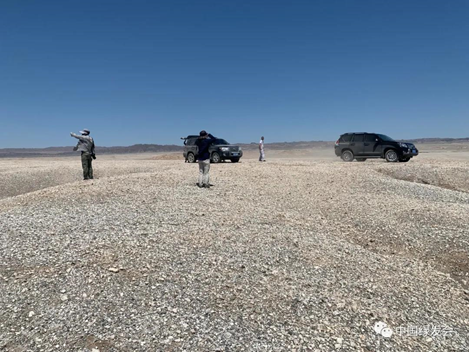
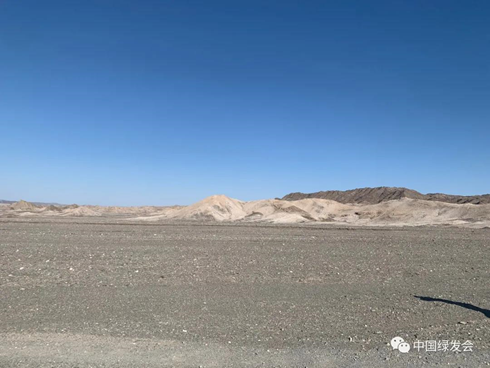
Going deep into the hinterland of Lop Nur and investigating the hydrology, ecology and geography of this area is a major focus of the scientific research in Lop Nur and its surrounding areas in the summer of 2021. This area is not far from Bayi Spring, and the place where Mr. Peng Jiamu, former vice president of the Xinjiang Branch of the Chinese Academy of Sciences, died.
Go east all the way and walk for the last 1 kilometer to the survey site
Lop Nur, once the second largest inland lake in my country, was first born at the end of the Tertiary Period and the beginning of the Quaternary Period. It has a history of more than 2 million years. In the history of our country, it was first seen in the "Shan Hai Jing" record. It was successively named Luze, Chuhai, Puchanghai, Laolan Sea, and Peacock Sea to describe its vast waters. However, by 1972, This ancient vast lake has completely dried up, and its wide lake basin and surrounding areas have also evolved into a vast desert.
Before entering Lop Nur, the scientific expedition team did a lot of homework on this famous dry lake area. However, according to the scientific expedition team's understanding, due to some objective reasons, it has been able to enter the hinterland of Lop Nur so far and inspect its natural and geographical conditions. The number of people is still quite limited. Compared with last year, although the scientific expedition team traversed Lop Nur horizontally, they still had little understanding of the geology and hydrology of the lake basin area far away from the provincial highway.
After leaving Luozhong Town, the Land Cruiser plunged headlong into the desert area. There are basically no roads in this area, and it is very rare to see traces of ruts along the way, which proves that construction teams have come in nearby. The driver was young and vigorous, and the three cars were fast, and then a long, huge white smoke rose up in the desert. At the beginning, you can see the endless hard salt crust in the Lop Nur Lake Basin. After it surges like a wave, it solidifies in an instant, and continues to move east. The salt crust disappears and is replaced by layers. The sandy soil is covered by small gravels, and the remaining veins of Altun Mountain enter the field of vision: except for the stone, it is still stone, and the flaked mountain body is eroded by wind and rain, without a trace of green.
"There is still rain here. Look at the folds of the mountain rocks." Teacher Wang, who is in charge of the geological environment survey, reminded the fellow members of the scientific expedition team to pay attention to the traces of water erosion of the mountain. And the other more concerned question along the way is: What kind of danger is Lop Nor?
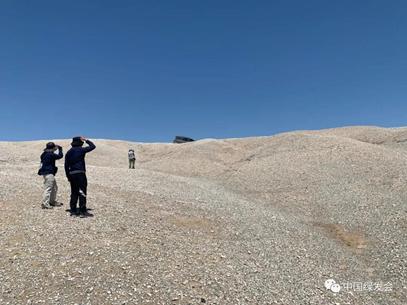
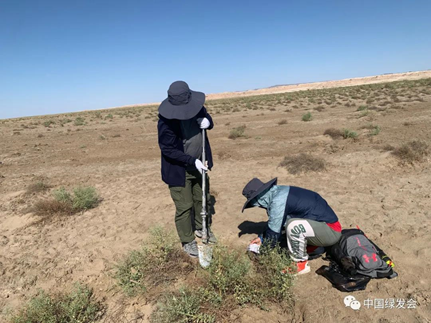
The driver said that he himself entered Loulan three times before and after. "Now there is a big earthen bag at the old site, which is the site of the pagoda, as well as the remnant walls and beams of the three rooms, and some wood scattered among the yellow sand." You don’t want to walk a second time after walking once. You can walk for 4-5 hours for 20 kilometers, and the soft soil can be buried on the handlebars.” The driver described himself as driving on such a road, “driving enough to doubt life.” . While he was talking, he did not delay the steering wheel at all, and there were no other track marks in front of him. The vehicle began to rush between the high and low dirt bags. Because of the role of the seat belt, everyone was often caught up. After throwing it high, he dragged him back to his seat again, his neck and chest were sore, he was clearly driving in the desert, but he seemed to be rushing in the sea and the waves.
The remaining veins of the Altun Mountains in this area are not high, and the height of the mountain is about 30-50 meters, and it has stretched into the desert. When the Altyn Mountain was drilled out, the sand pile in front unexpectedly got bigger and bigger, with a slope of more than 30 degrees. Because there was no way to go, the three cars drove on their horsepower and rushed up the slopes one after another with a roar. But after going up to the soil slope, I found Ma Pingchuan underneath, and the gravel desert stretched out to the horizon, but the car of the scientific expedition team could no longer descend easily: the big slope under the feet was deeper and steeper, like a cliff standing, and There are large and small craters, and the sand is extremely soft. If you continue to rush down, the consequences will be disastrous.
The leader car followed the high slope, carefully exploring the road ahead. "Wait, I can't drive anymore. It will overturn if I rush down." The driver of the second car stopped the lead car and asked everyone to get out of the car and walk to the survey site. Both cars explored how to go downhill by themselves. There is still about 1 km away from the survey destination, and there is no communication signal.
Sandy oasis, biologically richer than imagined
The scientific expedition team descended along the steep slope, and the bottom of the slope about 70-80 meters was a large piece of flat gravel desert. In the distance, outside a slightly higher dike-like enclosure, is an oasis on the alluvial fan in front of the Altun Mountain.

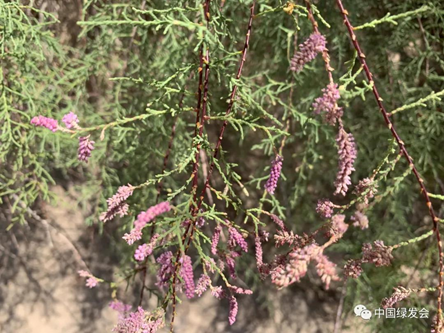
From the pre-buffered map of Ovi, this oasis is right between the Altun Mountains and the Kumtag Desert, and to the west is bordered by a large area of "big ears" that are grayish white due to the high degree of salinization. About 20-30 kilometers wide, the north-south arc extends for hundreds of kilometers to the south, and finally disappears in the desert. From the geographical distribution point of view, this green area should be formed by alluvial deposits in front of Altun Mountain, and there should be relatively abundant groundwater resources underground.
The scientific expedition team investigated this area and found that there was no surface runoff. The ground was all fine yellow sand, but some extremely drought-tolerant plants, such as reeds, tamarisk, etc., covered the surface, showing a rare piece of land. Green.
"To be precise, it should be a sandy oasis, not a wetland." The teacher of the plant group began to count the community plots. The plant species here is relatively single, but for the soil group, it is a very good survey plot: none at all. Human interference, what they want to investigate is mainly the distribution of soil microorganisms in different plant communities or different habitats. This is undoubtedly a very good comparative study sample. The insect group has also started to act, because as long as there are plants distributed and complete plant life forms, insects will inevitably participate in it. It is impossible that plants distributed in a certain area are completely wind-pollinated plants.
The eminent monk of the Jin Dynasty described Lop Nur in his "Book of the Kingdom of Buddha": "There are no birds on the top and no beasts on the bottom. ". But for this oasis in the vast desert, the wildlife investigation team was obviously very motivated. As before, with a long barrel and short cannons, they began to conduct scattered investigations along their own survey lines. Among the sparse reeds, there is a Tarim hare who whizzes away and runs away. On the fine sand, you can clearly see the trail chain of some artiodactyl animals...
The plant team has been insisting on conducting sample surveys and has done nearly 15 samples in two hours. A huge tamarisk bag looks very abrupt on the surrounding desert. The plant team surveyed by the teacher on the spot and found that the plant height was 0.93 meters, and the coverage had reached 92%. Tamarix grows well, with purple-red spikes blooming at the top in the wind and sand. The sandbags have been hollowed out by wind erosion, exposing thick and intertwined roots, and they have been deeply rooted in the ground, and the entangled roots of these knots are also firm. Grasp the quicksand firmly. Comparing the photos of the Lop Nur plant survey of the Xinjiang Branch of the Chinese Academy of Sciences in the 1980s, this tamarisk tree should be no less than 600 years old.
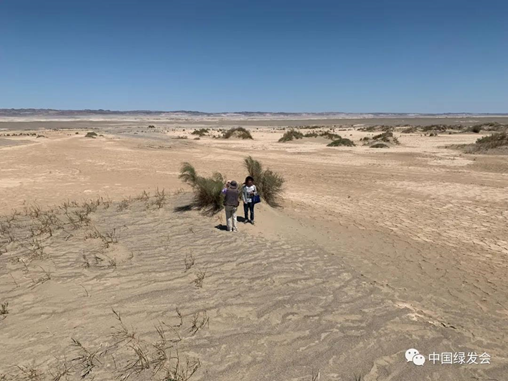
Standing on the side of the tamarisk bag, you can clearly hear the wind on the wasteland, whistling and approaching from a distance step by step until the thin tamarisk branches around you start to vigorously sway, but the wind is hot, and the air temperature is already at this time. Around 45 degrees, the investigating team's mobile phone was obviously hot.
Shortly lost contact, almost no people can be found 300 meters away
This scientific investigation consisted of different groups such as wild vertebrates, plants, hydrological synthesis, geological environment, insects, soil, etc. Everyone has different field investigation methods and investigation purposes, so the investigation area is often scattered. Usually, after the investigation teams have completed their investigation tasks, they will leave the investigation area in a unified manner.
When the small groups were investigating, the driver of the leading vehicle greeted the driver of the second vehicle, saying that he would take the opportunity to explore the road, and then disappeared in no time. About half an hour later, the insect team and the plant team returned to the place of departure. The driver of the second car was very anxious. He said that the driver of the lead car’s tire had blown, but the other party didn’t know about it. He wanted to go. Chase, let him repair the car in time. The insect team said that there were still two teams that were not there, but the driver insisted to notify the leader to fix the tires first, and then return to pick up the people.
"Do you have satellite phones?" The driver of the second car, who is quite familiar with Lop Nur, looked very uncomfortable after learning that the only two satellite phones of the scientific expedition team had been taken away by a car that left early. "There is no car. It’s unimaginable to walk out of Lop Nur on foot." Because there was no way to contact the driver of the lead car, the second car took part of the scientific expedition team and hurried forward, hoping to catch up with the opponent as soon as possible and solve the tire problem.
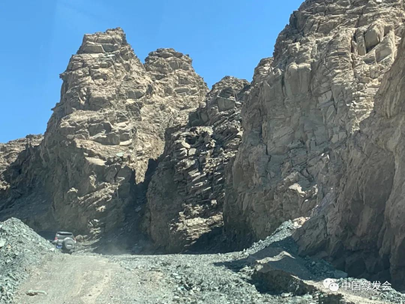

After a violent chase, I finally found the trace of the lead car in the wilderness. At this time, looking back at the investigation area where the front foot had just left, I found that the sun was hanging in the sky at noon, but the oasis was actually white and there was nothing to see. It turned out that the wind was blowing up the sand and soil: people inside can only see the range of 200-300 meters, people outside can see nothing, and besides the endless rocky desert, there is still a rocky desert in front.
The driver of the leading car was lying on the ground, sweating profusely under the car to change the tires. The driver asked the team members to help find a harder stone pedestal. The investigation team members scattered all over the place, but there were only soft ones everywhere. The sand, the black gravel, the stone with the big mouth of the small bowl can't see a piece, and can only go back empty-handed. When the driver of the lead car was repairing the car, the second car returned the same way and received a member of the Hydrological Comprehensive Team, but still could not see the trace of the Wild Animal Team, everyone was secretly anxious.
"Working in the field for a long time, I believe that everyone has such experience: wherever you lose contact, you will go back and wait for rescue." The scientific expedition leader Lu Bo comforted everyone. Finally, the vehicle was repaired, and the two vehicles ran back along the original road at a fast speed. In front of a single house that was getting closer and closer to the initial drop-off location, they finally saw two wildlife team investigators. They were waiting. Needless to say, such a house was left by the construction team entering the desert. In the absence of contact, the tacit understanding between the scientific expedition team members gave the expedition team a sigh of relief.
In the shadows in front of the room, the scientific expedition team simply ate something to replenish their stamina, and then drove back. After all, it would take about 3 hours at the fastest to leave this area to reach a crowded place. Although Mr. Peng Jiamu's cemetery is not far away in the vast sand, but after a brief loss of contact, the scientific expedition team decided to leave the desert as soon as possible.
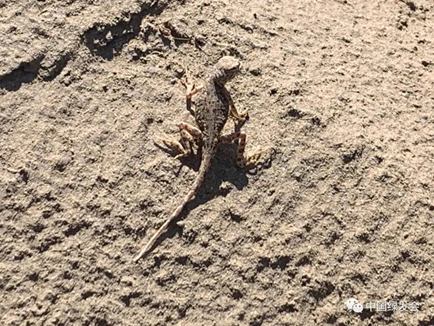
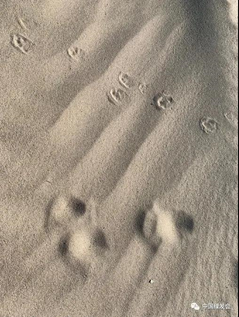

(All pictures are provided by the CBCGDF)
On the return trip that day, the lead car's tire was inexplicably punctured for the second time and was stuck in the desert again. In order to rescue this car, the driver of the second car was too anxious. He wanted to turn back and give aid several times. When he was helpless, the driver magically found the half-frame communication signal, unplugged the phone of the team base, and let the team. Send another rescue vehicle.
Text/gone
review/Shanlong
editor in charge/angel
Translated by Luke Chen
Original website:https://mp.weixin.qq.com/s/9iLzojEKi-BptMuH6GHoLQ
Contribution
https://www.paypal.me/CBCGDFChina
http://www.cbcgdf.org/English/ConfirmDonaTion/0.html
